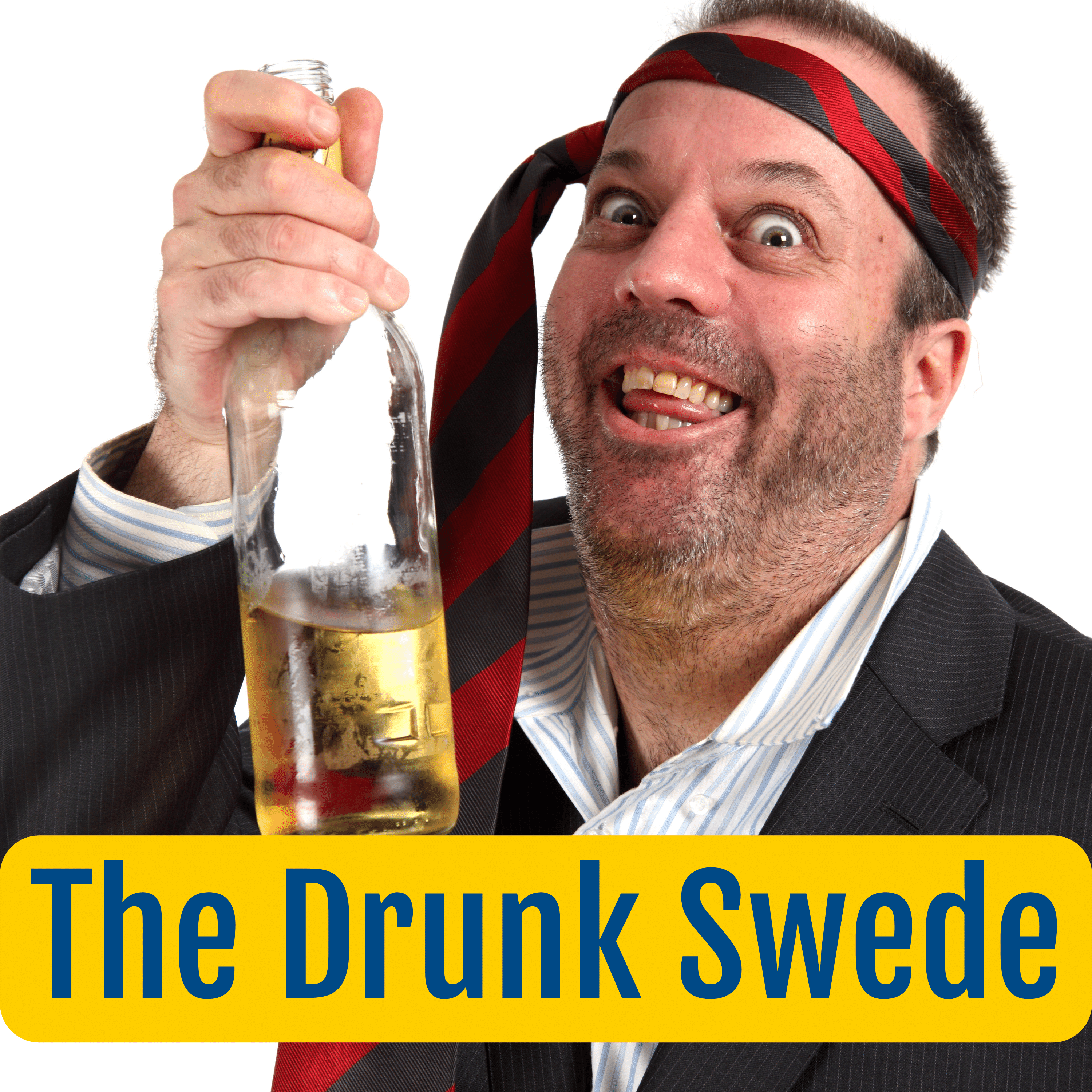Today’s content
In today’s episode, I want to share some ideas for those of you that have ever thought about taking a vacation in Sweden. I will start with travel restrictions, talking about some general things that you need to know like where to stay, how to travel within Sweden, some tips for food, and so forth.
I will then talk about places to visit and activities to take part in. For that part of the episode, I will talk about four different regions of Sweden, starting with the capital Stockholm, and then talk about the east coast, the west coast, the south, and finally the north. That way I hope everyone can find something that is interesting to them.
At the end of the episode, I will give you some general tips when it comes to your interaction with Swedes, and some useful phrases in Swedish for those of you that would like to learn. So with that introduction, let’s get into this episode.
We all know how travel, in general, has changed since the pandemic started but as of 1 April 2022, there is no longer an entry ban to Sweden. I recommend that you follow information about your destination at the Swedish embassy’s website. If you are visiting Sweden from a non-EU country it is also important that you make sure you familiarize yourself with how your travel insurance will work before you leave.
Accommodations
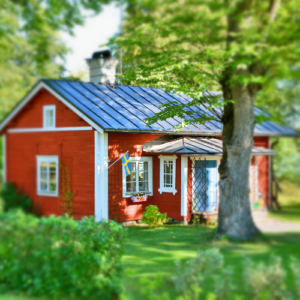
So how can you stay in Sweden?
Accommodation, like everything in Sweden, is not cheap.
Let’s start with the cheapest alternative, camping. Sweden has what is called the Right to Roam, a right that makes it possible for you to put up a tent on even private land as long as you are not close to the home or on farmland or a garden. I have done a special episode about The right to roam and it will be linked in the description. https://aswedishfika.com/allemansrattem-the-right-to-roam/
There are also campgrounds where you pay on average $20 – $30 per night for one tent with two adults. The prices vary depending on the type of facilities the campground offers like toilets and showers.
To step it up a bit you can choose to stay at a hostel. Hostels can be found from $25 up to $65 per night depending on what part you are in and what type of accommodation. You can find private rooms and dorm rooms. Some will include bed linen while others you have to bring your own.
If we look at hotels the price range is so much wider. The average cost for a hotel room per night in Sweden is $88, but the range of cost is between $50 to $225. If you are lucky and stay a bit further from the major cities you might find hotels as low as $20 per night.
Alternative to hotels might be Airbnb or vacation rentals. The cost for a one-bedroom Airbnb is between $50 to $150 and for renting an entire home the cost will be $150 to $500 per night.
No matter what accommodation you choose, as I said, it is not cheap compared to many other destinations, but as I am biased in the matter, I say it is worth it.
Food & Drinks
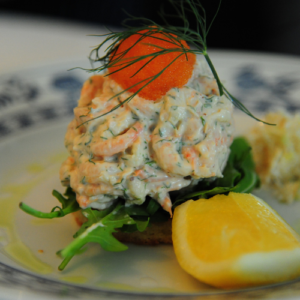
Let’s now look at food and drink in Sweden. And yes, as you probably guessed this is not always cheap either. Eating out in Sweden is expensive, but there are also some advantages compared to the US. Tipping is not something that is expected, so what the check says is what you pay, often rounded up to the nearest 20SEK. I did an episode about dining out in Sweden where I talk more in detail about the differences between eating out in Sweden compared to the US, link will be in the description https://aswedishfika.com/dining-out/
You can get cheap street food from outdoor vendors starting at around $5, or hot dogs at a hot dog kiosk at the same price, but if you want to enjoy a sit-down meal at a restaurant the price goes up. A three-course meal at an average restaurant for two people will cost you around $80. Most dishes start at around $20 at the average restaurant, but if you take advantage of the lunch prices and chose “dagens rätt” today’s special you can get a decent meal for around $10.
If you add drinks to that, especially of the adult character you will soon increase your check. A beer usually costs around $7, a bottle of wine around $300, and a soda around $2 but remember that soft drinks usually don’t include free refills.
If you are staying at an Airbnb or renting a vacation home and do your own cooking you may be able to keep the cost down to around $70 per person per week. That is excluded alcohol. When it comes to alcohol it is important to know that you can only buy it at Systembolaget, that state-owned liquor store, and the opening hours are limited. I also did an episode about Swedes’ ambivalent relationship with alcohol or The Drunk Swede, and I have a link to that in the description as well. https://aswedishfika.com/swedes-ambivalent-relationship-with-alcohol-or-the-drunk-swede/
Another thing that sometimes surprises visitors is that you can drink tap water. So investing in a refillable bottle is a great idea and just fill it up with the water from the tap. Not only is it drinkable, but it is also delicious.
Transportation
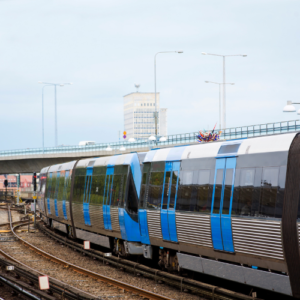
Before we look at places I recommend that you visit, let me first mention the public transportations in Sweeden, whether you are traveling within a city or you will travel from one part of Sweden to another the transportation system is not just affordable, it is also convenient and you can get almost everywhere without any trouble using busses, subways, trams, and trains. The alternative is renting a car which is expensive, and if you are an American and think that gas prices here are outrageous at the moment, you should know that around $9 per gallon or 24SEK per liter.
Places to visit
Stockholm
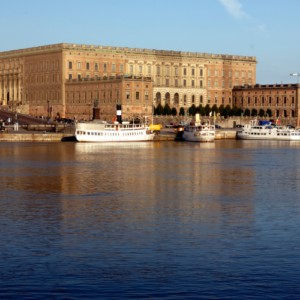
So now let’s take a look at places to visit and things to do in Sweden, and we start with the capital Stockholm. Stockholm, the capital of Sweden, encompasses 14 islands and more than 50 bridges on an extensive Baltic Sea archipelago. Since Sweden can be cold and dark in the winter, the best time of the year to visit Stockholm is between May and September, the days are long, and the weather is temperate.
You should visit the archipelago, at least take one of the many guided boat tours that take you around a portion of it. Another guided boat sightseeing tour that can be of interest is Under the Bridges of Stockholm, where you will see a lot of what Stockholm has to offer from the seaside.
If you are interested in history I have a few suggestions for you. The first one is The Vasa Museum which has become a natural part of Stockholm’s skyline. Its masts rising high above Djurgården have become a beacon guiding curious tourists and Stockholmers alike. I have earlier made an episode about the ship Vasa and its history and if you missed that I will have a link in the description. https://aswedishfika.com/the-regal-warship-vasa/
Another place for those interested in history is Skansen. Skansen is the world’s oldest open-air museum, showcasing the whole of Sweden with houses and farmsteads from every part of the country. At Skansen, you can discover Sweden’s history and find out how Swedes once lived according to the changing seasons, through the customs and traditions, work, celebrations, and everyday life of times gone by.
And of course, we have a couple of castles that are worth a visit. The first one is The Royal Palace, one of Europe’s largest and most dynamic palaces. The Royal Palace of Stockholm is His Majesty The King’s official residence and is also the setting for most of the monarchy’s official receptions, open to the public year-round. Besides visiting the castle and its many exhibitions you shouldn’t miss The Royal Guard which is also one of our most popular tourist attractions. Changing of the Guard takes place every day of the year. However, the ceremonial march through central Stockholm, accompanied by a full military band, is usually only possible from May to August.
The second castle is about 30 minutes north of Stockholm and can be reached by a boat trip from Stockholm for about $2 and that is Drottningholm Palace which is on UNESCO’s World Heritage list. It is the most well-preserved royal castle built in the 1600s in Sweden and at the same time is representative of all European architecture for the period. The Palace is Their Majesties the King and Queen’s permanent home residence. The rooms in the southern wing of the palace are reserved for this purpose. The rest of the palace and grounds are open to the public year-round.
When in Stockholm you should also take your time to ride the subway. The Stockholm subway system is said to be the world’s longest art exhibit – 110 kilometers long (around 68 miles). Traveling by subway is like traveling through an exciting story that extends from the artistic pioneers of the 1950s to the art experiments of today. Stockholm’s subway system is truly one of a kind. One hundred stations, each with unique art on its platform, walls, or waiting hall.
Another must when in Stockholm is to stroll through Old Town. The Old Town dates from the 13th century but most buildings are from the 1700s and 1800s. It is a glorious labyrinth of charming cobbled streets, alleyways, faded mustard, and rust-colored townhouses and meeting squares.
East coast and the Baltic sea

Now let’s talk about the east of Sweden and the Baltic sea. On the mainland, in the southeast, we find the Kingdom of Crystal, Glasriket.
Glasriket is a cultural hub nestling in the province of Småland, in southern Sweden, and covers a vast area between the cities of Växjö and Kalmar. The history of this famous glass district stretches back to 1742 – the year Kosta Glasbruk (now known as Kosta Boda) began hand-blowing glass here.
Swedens largest island, Gotland, is also worth a visit. Gotland can be reached by air, or by ferries from Nynäshamn south of Stockholm or from Oskarshamn in Småland.
Gotland is a paradise island with characterful wilderness and a coastline punctuated with sandy beaches and sculptural sea stacks. Historically significant, its main town Visby is a Viking-era wonder and UNESCO World Heritage Site. Visby’s historic townscape features a high number of significant architectural buildings and structures dating back to the 13th century. Wrapping around the centuries-old center, ringmuren (The Visby City Wall) – complete with towers and gates – was built between 1250 and 1288.
Sweden’s second-largest island Öland is also worth a visit and can be reached by car since there is a 6 km, 3.7 miles, bridge connecting the island to the east coast of Småland in Kalmar. The unique nature and mild climate make it an ideal holiday destination for royals and common folk alike.
South Sweden
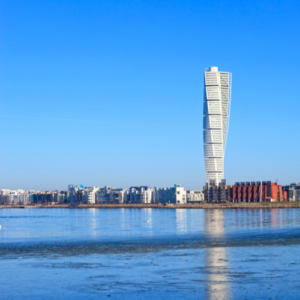
Now let’s take a look at the south of Sweden, and the province of Skåne. First, let’s take a look at Malmö just across the Öresund strait from Copenhagen in Denmark. Malmö is the third-largest city in the country. A swirl of diversity, a mishmash of old and new, Malmö is one of the most eclectic cities in Scandinavia. Spiraling skyscrapers loom above bustling centuries-old squares, and unassuming brick facades house a treasure of modern artistic creations. Founded in the late 1200s, Malmö originally belonged to Denmark, only becoming Swedish in 1658. Today, the city is home to over 316,000 people, a true melting pot of cultures, with residents hailing from over 170 countries.
One of the county’s definite gems is Österlen. This coastal region, nestled in Skåne’s southeast, is known for its pristine white sand beaches and is a popular destination for Swedes during the summer months.
West Coast

Now let’s take a look at the west coast of Sweden. We start in Sweden’s second-largest city Göteborg, Gothenburg, which combines vibrant urbanity, a friendly vibe, and seaside charm. It also has culinary prowess and a world-class craft beer scene. Gothenburg was founded in 1621 by King Gustav II Adolf and established itself as an important commercial fishing hub.
In Gothenburg, you should visit its almost 100-year-old amusement park Liseberg. Liseberg first swung open its gates in 1923. It’s known for its rollercoasters but offers a thrilling range of rides for the whole family. Another favorite destination with locals and visitors alike is Slottsskogen park – a sprawling haven of greenery combining cultivated parkland and natural forest.
Gothenburg is considered one of the world’s top craft beer hubs, counting numerous names to its growing list of breweries. The city even hosts one of the world’s biggest beer and whisky festivals every spring – GBG Beer Week –inviting you to take part in workshops, tastings, and beer launches.
North of Gothenburg you will find the province Bohuslän. Stretching along the west coast of Sweden from Gothenburg to the Norwegian border, Bohuslän is a seaside paradise celebrated for its seafood delicacies, cultural heritage, and numerous outdoor activities – boating and sailing included. Key destinations include Smögen, Marstrand, Lysekil, the Koster Islands, Fjällbacka, Grebbestad, Uddevalla and Strömstad. Hotspots such as the island of Smögen – with its famously picturesque Smögen pier. In the north of Bohuslän, you will find Kosterhavet national park, Sweden´s first marine national park. It is attractive for hiking, paddling, diving, swimming, and other nature experiences both on and by the islands, along the mainland, and on the outlying seacoast.
The North of Sweden

And finally, let’s talk about the north of Sweden. The northern part of Sweden offers a wide range of things to do, regardless of the season. During early summer, you can enjoy the unique Midnight Sun. In winter, the spectacular Northern Lights, known as the greatest light show on earth, can be seen in Swedish Lapland. Northern Sweden is also home to the Sami, one of the world’s indigenous people.
You might find some very unique accommodations in these parts of Sweden, here are a few examples;
The award-winning Sápmi Nature Camp, owned and operated by a local Sami family, encourages you to experience the arctic indigenous life in this Laponia World Heritage Area. Offering both autumn and winter package tours, you will experience unique vast landscapes with unspoiled arctic nature where Sami people have lived for thousands of years. The camp consists of double rooms in the form of Lavvu tents, furnished with comfortable beds and efficient stoves that keep you warm, regardless of the outside temperatures.
In the northern parts of Sweden, in the midst of a pinewood forest, lies this architectural highlight. Let your childhood fantasies come to life in these tree houses, suspended 4-10 meters above the ground. Choose from different designs such as the ‘Mirrorcube’, a 4x4x4 meter cube-shaped tree house covered in reflective glass, one meter is about 1 yard, or the ‘Bird’s Nest’, designed to look just like a gigantic bird’s nest. The Treehotel is the ultimate place to experience forest bathing the Swedish way.
Every year when the winter comes, the pristine waters of the meandering Torne River slow down and freeze into ice. On one chilly day in 1989, the first-ever Icehotel was hand-sculpted out of these massive ice blocks harvested from this very river running alongside. Today, over three decades later, the Icehotel has become a must-visit Swedish landmark for travelers from all parts of the globe. Each winter since the first and the original Icehotel was built, passionate artists gather in the modest town of Jukkasjäarvi to build a new rendition of this Arctic wonder. When the spring comes, the hotel is then left to melt and find its way back to nature. Each coming winter brings a one-of-a-kind version of the Icehotel, promising a new set of treasured memories just waiting to unfold in this stunning Swedish destination.
General Tips & Some Swedish

Let me give you some general tips for a successful vacation in Sweden. First, most Swedes speak excellent English, but they are in general somewhat reserved. If you want to know more about Swedes and how they interact socially you can listen to my episode The law of Jante link in the description. https://aswedishfika.com/the-law-of-jante/
Many places in Sweden don’t accept cash payments nowadays, so it is necessary for you to use a credit/debit card. More information in my episode Is Sweden moving towards a cashless society? https://aswedishfika.com/is-sweden-moving-towards-a-cashless-society/
Recycling is important in Sweden, so make sure you don’t litter (you can be fined) and that you put your trash in the correct bin.
If you are a vegetarian and vegan you have nothing to worry about, there is plenty of food for you to eat in most restaurants.
Remember that the weather is very different from season to season, and between different parts of the country, so before you start packing I suggest you research the period and area you are going to visit.
If you get sick or injured while visiting Sweden you should know that if you are from a European country you have the same access as Swedes to healthcare. If you are from any other country you should check with your travel insurance before you leave what rules they have or you need to pay the full cost.
Before we end let me share some Swedish words and phrases that can be good to at least be familiar with;
Yes Ja
No Nej
Thank you Tack
That’s fine Det är bra
You’re welcome Varsågod
Please Snälla/Vänligen
Excuse me Ursäkta mig/Förlåt
Hello Hej
Goodbye Adjö/Hej då
I do not understand Jag förstår inte
Do you speak English? Talar du engelska?
What is your name? Vad heter du?
My name is… Jag heter …
This is my last episode of season two. I will now take a short break of two weeks to take care of some personal business, but I will be back with season three on July 18th.
Until then, as we say in Sweden
Hej Då!




